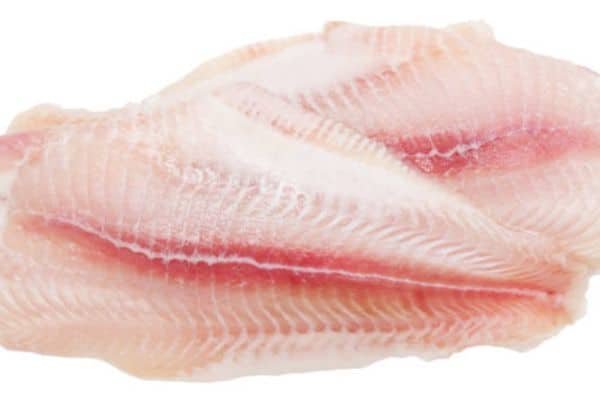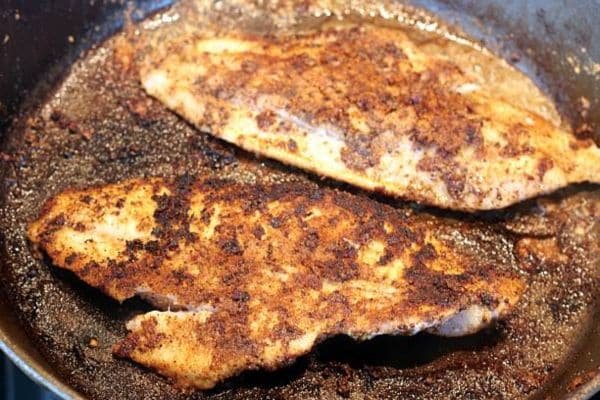I learned to fry catfish on a slow summer day with the kitchen window open and the radio low. My aunt stood by the stove and said, “Let the crust speak.” The pan sang like light rain. The first bite was crisp, clean, and bright. I still chase that sound. Here’s the promise. A simple pan method. A golden crust. Moist, tender flakes. No fuss and no stress. This is for home cooks who want clear steps and fast results. In this guide on how to fry catfish fillets in a pan, I share each step I use at home. Warm, real, and proven.
What You Need (Simple Tools and Ingredients)
Tools
- Pan with a heavy base for steady heat
- Tongs and a thin spatula for easy turns
- Wire rack set over a tray for draining
- Paper towels for blotting and cleanup
- Instant-read thermometer (optional) for oil and doneness
- Note: A best small fry pan for eggs also works for test bites and small batches
Oil
- Light oil with a high smoke point
- Peanut, canola, or sunflower work well
- Plan for about 1/4 inch depth in the pan
Fish
- Fresh, boneless catfish fillets
- Clean smell and firm texture
- Similar size pieces for even cook
Coating
- Fine cornmeal for crisp bite
- All-purpose flour for light structure
- Salt and black pepper
- Simple spices: paprika and garlic powder are great additions
Prep the Fish (Fast and Clean)

- Rinse the fillets under cold water. Pat very dry with paper towels. Dry fish browns better and splatters less.
- Season both sides with a light, even hand. Use salt and black pepper. Add a pinch of paprika and garlic powder for warmth.
- Mix a simple dredge. Use 2 parts fine cornmeal and 1 part flour. Add a small pinch of salt and pepper. Stir to blend so the flavor spreads even.
- Press each fillet into the dredge. Coat both sides and shake off the extra. Set the dredged fillets on a wire rack for 5–10 minutes so the coat bonds.
Heat the Pan and Oil (Safe and Steady)
Set the pan over medium heat. Pour in about 1/4 inch of oil. That depth lifts the fillets off the surface and helps even browning.
Look for a gentle shimmer across the oil. It should look like heat waves, not smoke. The surface will move in soft ripples.
Test the heat without tools. Touch a wooden spoon handle to the oil and watch for small, steady bubbles. Drop a tiny pinch of coating and look for a light, lively fizz.
Set a wire rack over a tray by the stove. Move each fillet there right after frying. Air flow keeps the crust crisp and stops the bottom from steaming.
Step-by-Step: How to Fry Catfish Fillets in a Pan

Lay the fillet in the hot oil, placing it away from the body to avoid splashes. Set one or two pieces in the pan so the oil stays steady. The edges should start to bubble right away.
Let it settle. Do not move the fillet at the start. The crust needs a short pause to set and release clean from the pan.
Flip once with a thin spatula or fish turner. Slide under the fillet with care and turn in one smooth move. Keep the crust intact.
Cook to a deep golden color on both sides. The fish will feel slightly firm and spring back to a light press. The flakes should start to separate with ease.
Lift to a wire rack and rest for 2–3 minutes. Salt the top while still hot so the grains stick to the crust. This keeps the bite bright and crisp.
Use a simple timing guide. Thin fillets: about 2–3 minutes per side. Medium fillets: about 3–4 minutes per side. Thick fillets: about 4–5 minutes per side. Aim for moist flakes that lift with a fork and a juicy center under the crust.
Pro Tips from the Stove (Experience + Trust)

Dry the fish very well before it hits the pan; water blocks browning and makes splatter. Use fine cornmeal for a light, crisp bite that stays tender. Fry in small batches so the oil holds steady heat and the crust stays sharp. Skim dark crumbs between batches to keep the oil clean and the flavor pure. Taste one small piece first, then tune the salt or spice to match the mood of the meal. Finish with a squeeze of lemon for a bright, clean lift that makes each bite pop.
Oil Choices and Heat Control (Beginner Essentials)
Choose a light oil with a high smoke point. Peanut, canola, and sunflower work great for pan fry and keep flavors clean. Look for steady, small bubbles around the fish and a soft shimmer on the surface; no smoke. Nudge the knob in small steps to hold that sweet spot. Swap the oil if it turns dark, smells bitter, or leaves harsh taste, since old oil dulls the crust and the fish.
Simple Seasoning Paths (Beginner-Friendly Flavors)
Keep it classic with salt and black pepper for a clean, sweet fish taste. Add mild spice with paprika and a light touch of garlic powder for warm color and gentle depth. Brighten the crust with lemon-pepper and a little fresh zest for a sunny lift. For Cajun-style warmth, use a small pinch of cayenne and a hint of onion powder for cozy heat without flair.
Easy Sides and Serving Ideas (Round Out the Meal)
Set a plate with lemon wedges for a bright, fresh hit. Add tartar sauce for creamy tang or a dash of hot sauce for a lively kick. Keep the fish center stage and let the sauce play support.
Build balance with slaw for crunch and acid. A creamy slaw feels rich and smooth. A vinegar slaw cuts through and keeps each bite light.
Serve warm cornbread for comfort and texture. A light salad with herbs and cucumbers adds a cool, clean note. Both pair well with the crisp crust.
Make a catfish sandwich for a fun twist. Use a soft bun, crisp lettuce, and a few pickle slices. Add a thin swipe of sauce and a squeeze of lemon to tie it all together.
Troubleshooting Guide (Clear Fixes)

Soggy crust: The oil is too cool or the fish is too wet. Pat the fillets very dry before coating. Heat the oil to a gentle shimmer and keep space in the pan.
Burnt spots: The oil is too hot or the coating is too thin. Lower the heat a notch and let it steady. Press the fillet into the dredge for an even coat.
Coat falls off: The fish moved too soon or the coat did not bond. Let the fillet sit in the pan to set the crust before the flip. Rest dredged fillets on a rack for 5–10 minutes before cooking.
Greasy taste: The oil is old or full of crumbs. Skim dark bits between batches to keep it clean. Swap in fresh oil if it smells sharp or looks dark.
Gear Note: Best Small Fry Pan for Eggs
Pick a pan with a flat, stable base so heat spreads even and the crust cooks clean. Choose solid heat holding, so small pieces brown well without hot spots. A slick surface helps tiny test bites release without tearing, and a comfy handle keeps the grip safe and sure. A best small fry pan for eggs often shines for tiny tasks in this recipe too.
This little pan earns its spot beside the main skillet. Use it for test bites before the big batch. It also handles small fillets and quick sides, like toasting spices or warming sauce. The result is smooth flow at the stove and less crowding in the main pan.
Conclusion
The path is simple and strong: dry the fillets, season with care, dredge in a light mix, set them in hot oil, flip once, rest on a rack, finish with lemon. Each step adds up to a golden crust and tender flakes. Keep the pan calm and the oil clean. Let the fish shine.
Start small to build trust. Fry a single fillet first. Taste, then tweak the salt or spice to match your mood. The next batch will sing even more

